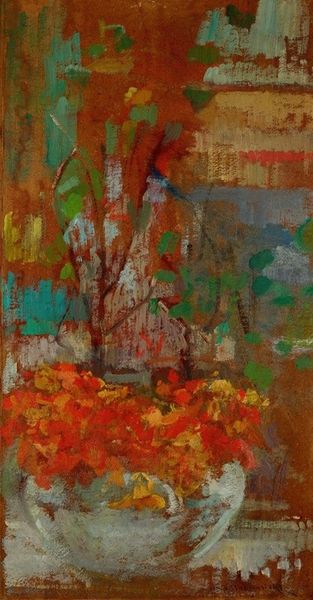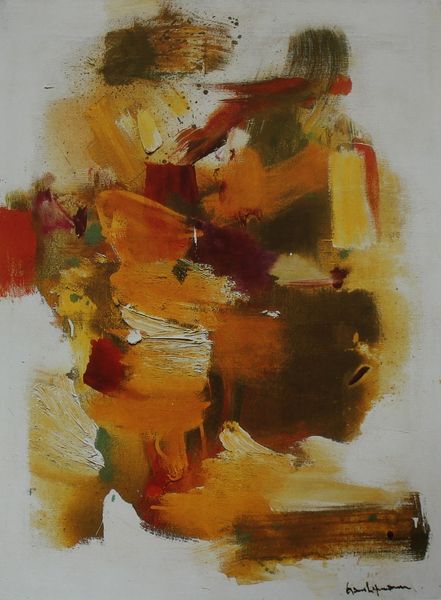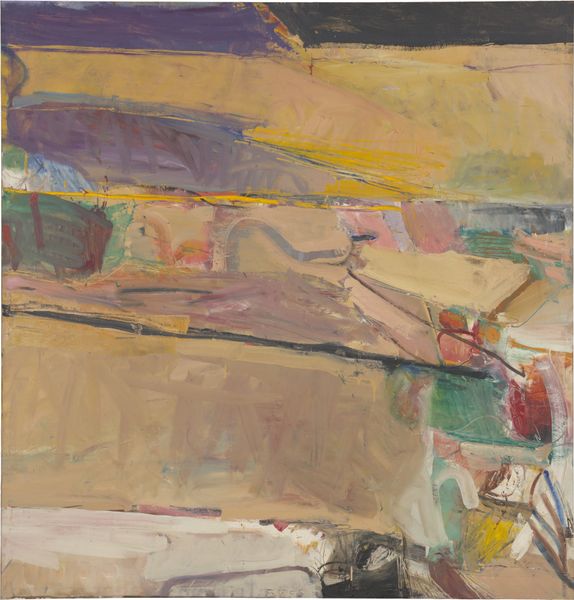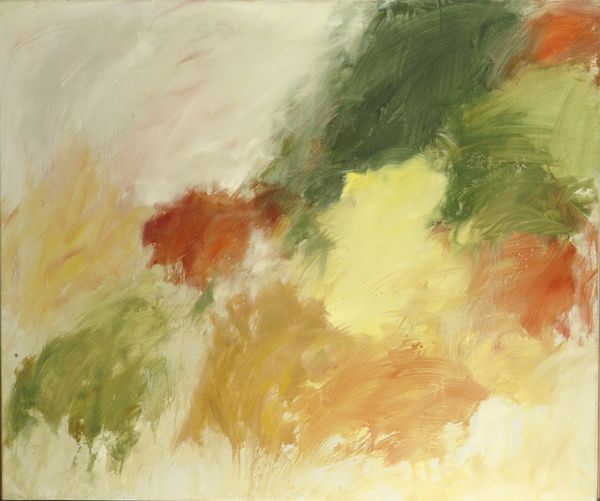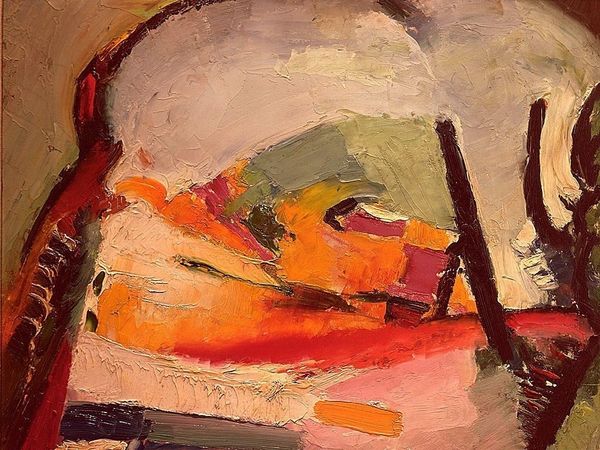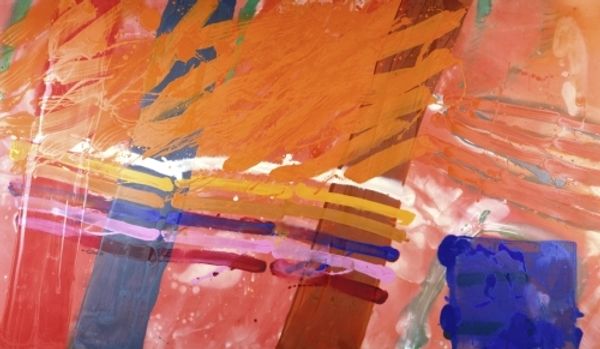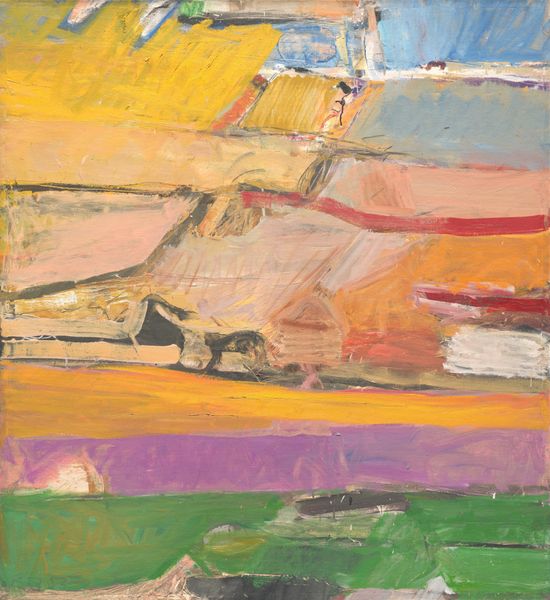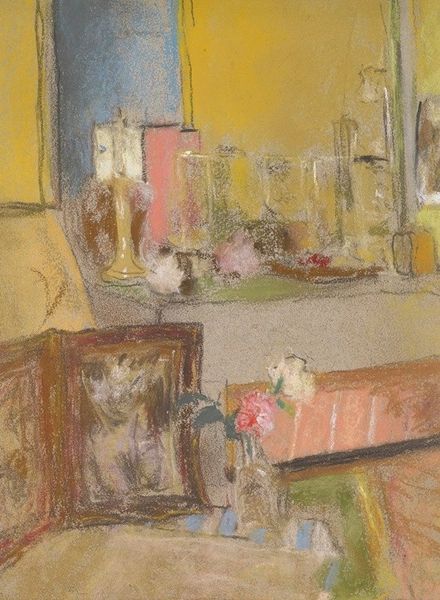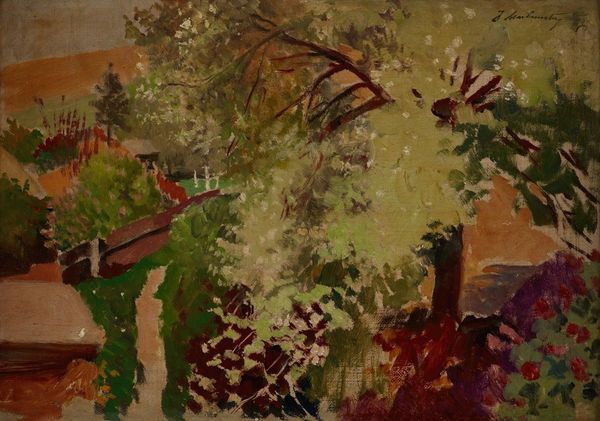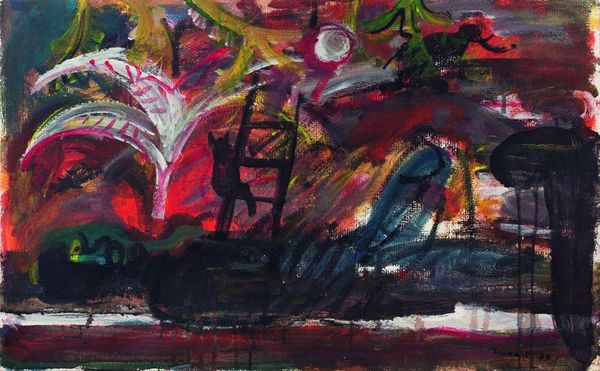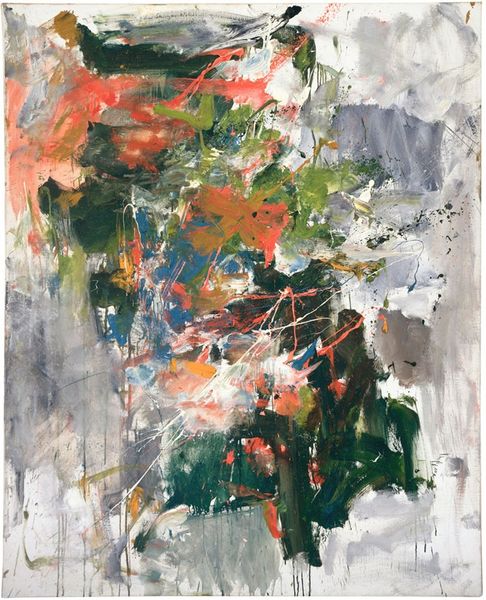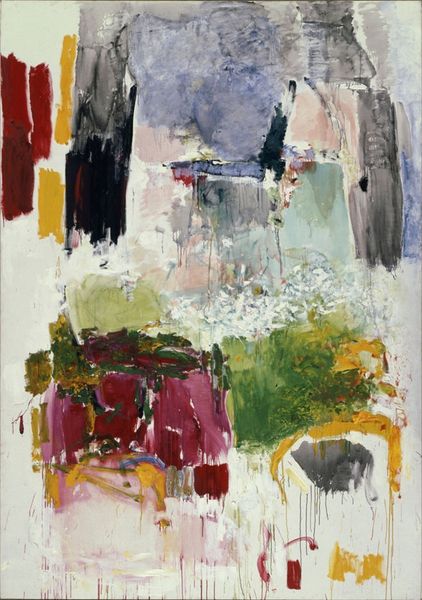
oil-paint, impasto
#
abstract-expressionism
#
abstract expressionism
#
oil-paint
#
landscape
#
oil painting
#
impasto
#
modernism
Copyright: Robert De Niro, Sr.,Fair Use
Editor: Here we have Robert De Niro Sr.’s 1968 painting, "Autumn Landscape with House," rendered in oil with visible impasto. The composition is quite loose, almost blurring the lines between the house, trees, and the environment itself. It’s like a fleeting memory of a landscape. What are your initial thoughts on it? Curator: It is tempting to look at De Niro Sr.'s work, specifically in light of Abstract Expressionism, as a form of rebellion. Considering the art world’s institutional shift post-World War II, figures were attempting to create art reflecting a newfound national identity separate from established European art markets. Do you think that impacted how such art was both made and viewed? Editor: That's a great point! Perhaps this loose interpretation of the landscape allowed for a distinctly "American" perspective, breaking free from the constraints of more traditional landscape painting? Curator: Precisely. We might think about the role of galleries and critics during this time. How did their tastes and agendas help to promote certain artistic styles, impacting artists’ careers and the public perception of modernism? Did De Niro Sr. manage to separate himself enough to feel ‘authentic,’ or was it inevitably a part of that system? Editor: That brings up an interesting question: Does the art world, with its structures of recognition, in turn influence the very style artists adopt, almost shaping their perception and subsequent creative choices? I wonder if De Niro Sr. grappled with that balance? Curator: I think he inevitably did. Even rejecting those influences requires an understanding of them. Seeing the visible brushstrokes reminds us of the physicality, of his act of creation. He paints ‘landscape,’ but in reality it's all about exploring paint as a substance and the freedom that represents, within the larger social constructs around art itself. What's your take on that idea? Editor: I agree completely! Reflecting on our discussion, it really highlights how an artwork is more than just what's on the canvas. It’s intrinsically linked to the complex environment that fosters its existence. Curator: It’s an exploration of the individual’s artistic freedom but within a structured environment of expectations and market forces. Art rarely exists in a vacuum.
Comments
No comments
Be the first to comment and join the conversation on the ultimate creative platform.
